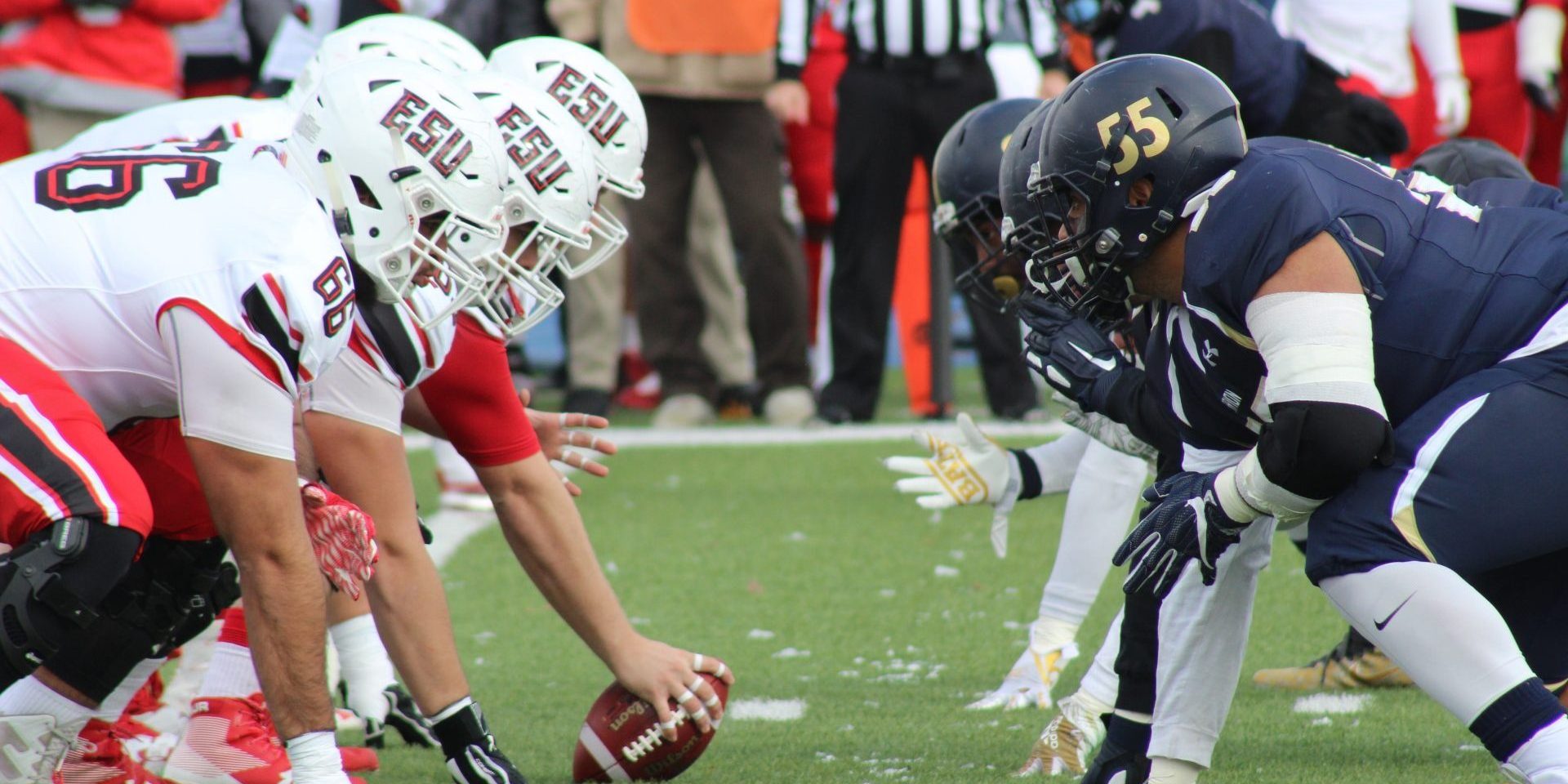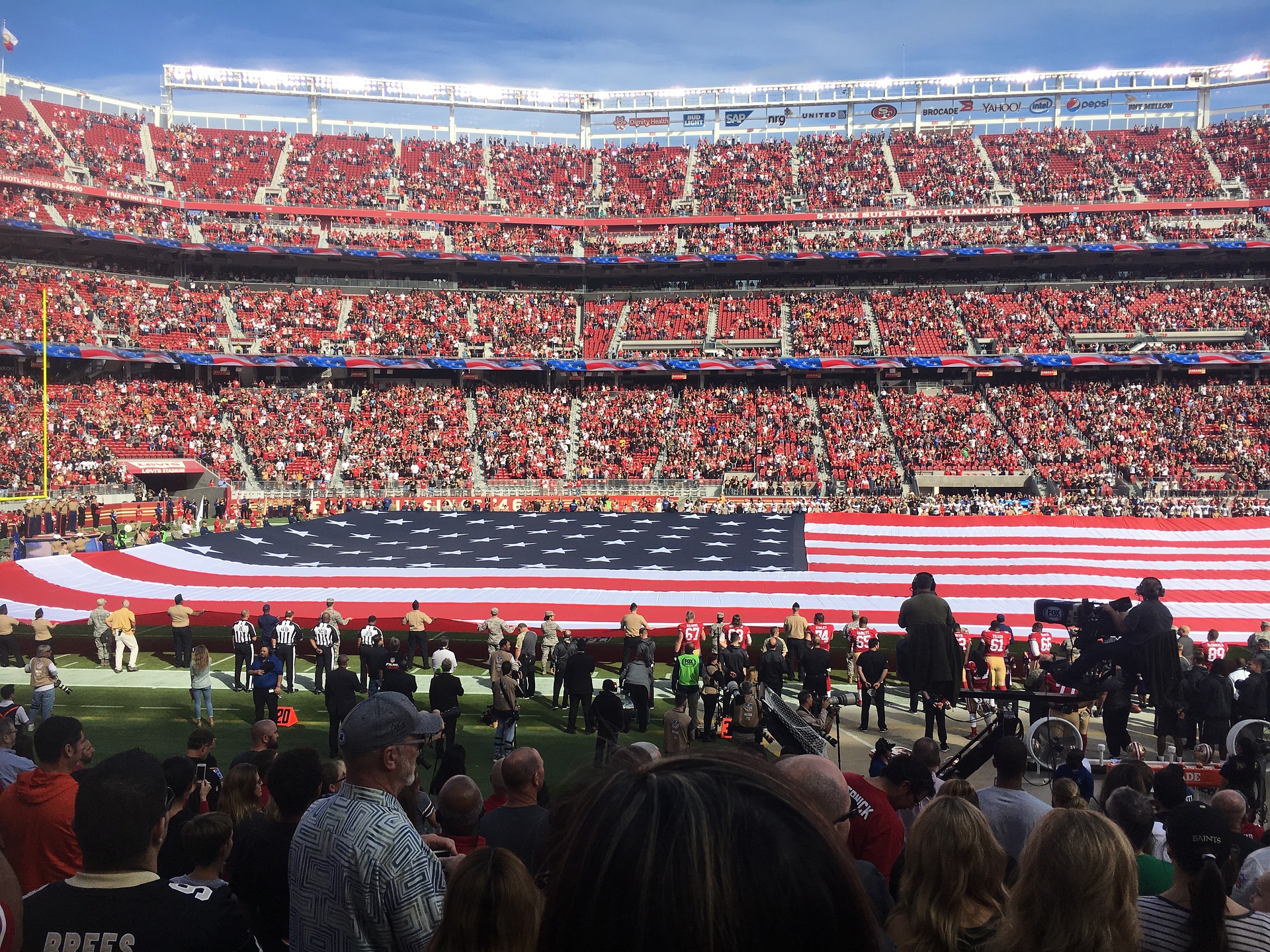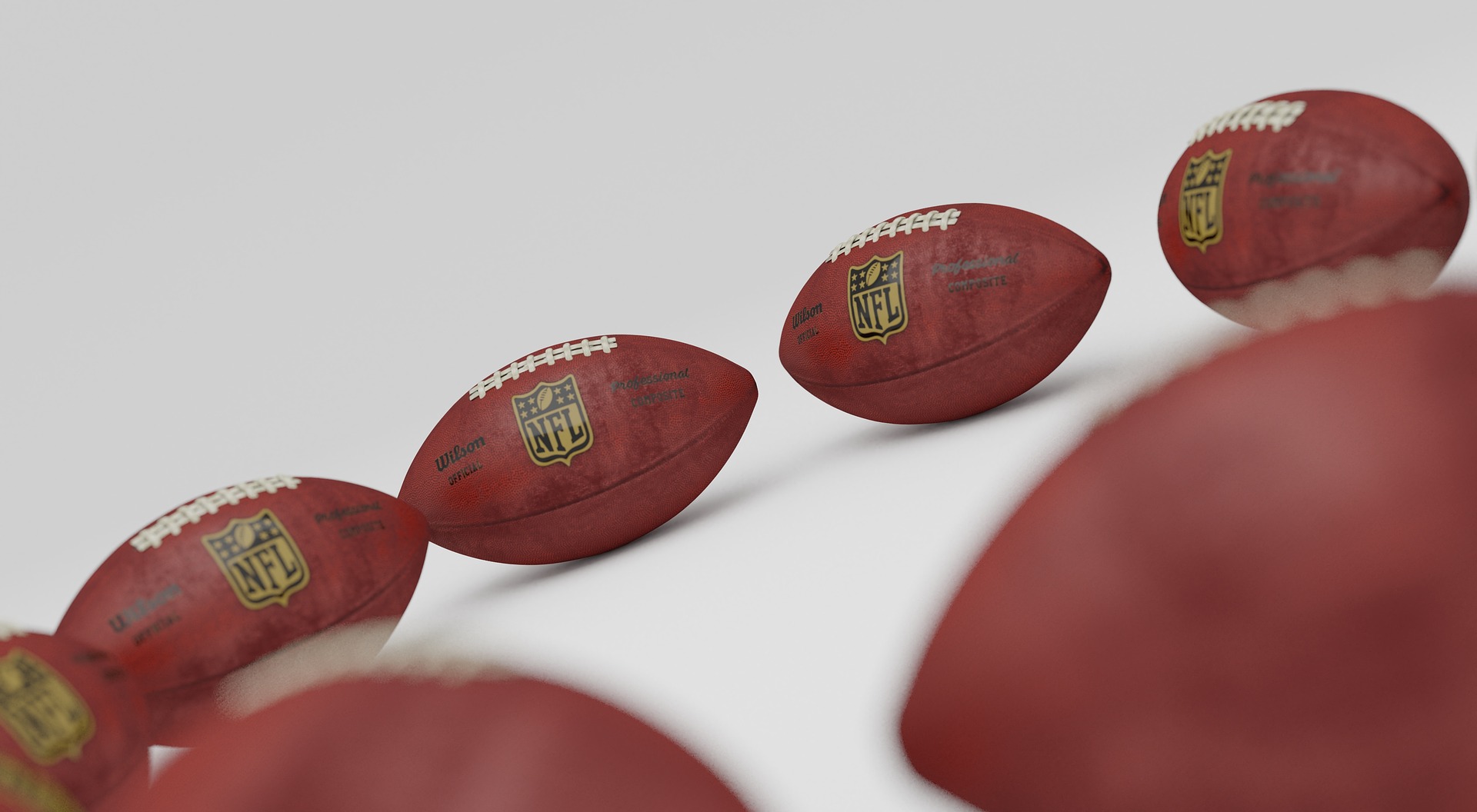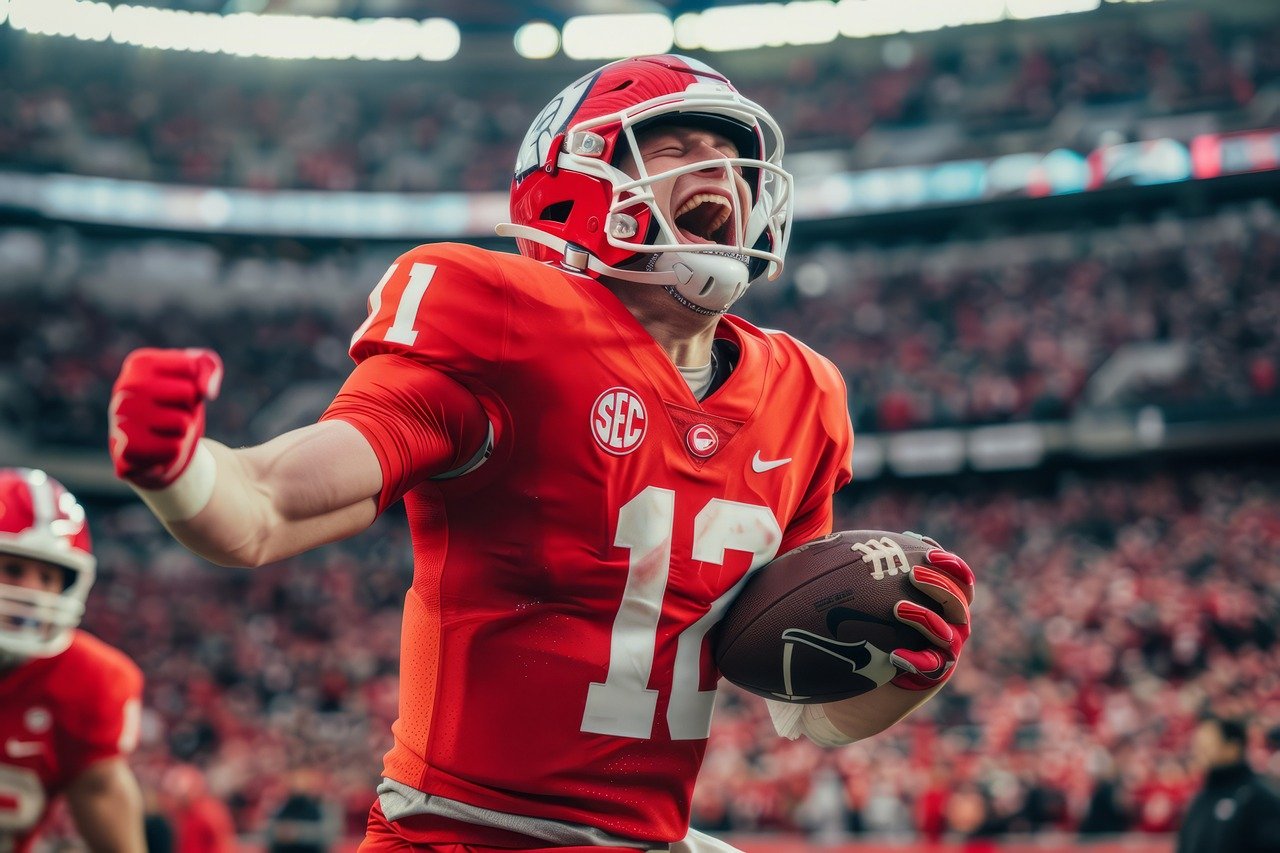Why do NFL players not wear sleeves?


The NFL has come a long way since its early days when players wore knickers with stockings or socks, leather helmets and shoulder pads. Many changes have been made to the team uniforms over time.
Early 1900s: Knickers, socks, leather helmets & shoulder pads. Players often borrowed clothes, resulting in mismatched outfits.
Late 1940s to Early 1950s: Cotton jerseys & pants with leather helmets. Plastic helmets provided better protection for players.
Early to Mid-1960s: Nylon jerseys & pants with partial plastic helmets without facemasks. AFL (American Football League) had their own design until merging in 1970.
Late-1960s to Mid-1970s: Vinyl/Durene blend jerseys with pants with a side stripe & full-coloured plastic helmets. Logos were added to helmets, allowing fans to recognize designs across teams.
Late-1970s to Early-1990s: Lighter & longer lasting fabrics for better on-field performance. Shoulder stripe was added & alternate jerseys with different colours/styles were introduced.
Mid-1990s to Early-2000s: Polyester fabric for stretchy, form-fitting jerseys & pants. Reebok became the sole provider of uniforms & jersey numbers on pants were added.
Current Era: Tighter-fitting uniforms with synthetic fabric providing added agility & range of motion. Eco-friendly materials with durability & breathability are used.
Typography adjustments, sponsorship placement and no sleeves are also key features of NFL uniforms. Loose long sleeves can restrict movement & grip sensitivity, so players prefer half or no sleeves. To look like an athlete, tight-fitting, stretchy, breathable & sweat-wicking fabrics are the way to go.
Reasons for Not Wearing Sleeves in NFL
To understand why NFL players do not wear sleeves, we need to explore the reasons behind it. In order to provide you with answers, this section delves into the various performance, comfort, and fashion-related reasons behind this trend.
Performance Related Reasons
Players choose to go without sleeves, believing it can give them an advantage. Compression sleeves can limit circulation, whereas looser sleeves can be caught on equipment, distracting the athlete. Showing skin allows for greater range of motion and tactile sensation, leading to better alertness and response times.
In some climates, long sleeves can cause overheating, and in colder temperatures, they can cause hypothermia. Going without sleeves lets players regulate their body temperature and reduce health risks.
Certain positions benefit from skipping sleeves more than others. Receivers need arms free for catching the ball, and kickers may need grip traction if they use their feet.
Sleeves were first introduced in the early 1900s as a way to differentiate teams without color alone. Now, many football players prefer going sleeveless for extra comfort or function.
Comfort Related Reasons
NFL jerseys lack sleeves for comfort reasons. Long sleeves can be too restrictive and limit the smooth movement needed for football. Moreover, they are better ventilated for hot weather or intense play to reduce sweat and discomfort.
Sleeveless jerseys are not exclusive to NFL players. Athletes in sports like basketball, soccer, and tennis wear them too.
However, this absence of sleeves can lead to injuries when tackled. To stay safe, some players wear arm compression sleeves. On colder days or in cold environments, coaches recommend warm base layers, or long-sleeved compression tops that extend beyond the visible jersey sleeves.
Fashion Related Reasons
The NFL’s lack of sleeves is due to players’ and fans’ style preferences. It’s seen as modern and athletic, plus it allows more mobility and breathability during play. It could also be that it looks trendier than traditional sleeve-wearing uniforms. Some players choose to go sans-sleeves for comfort too.
Exceptions exist – like cold weather games – but they’re few and far between. Michael Irvin was the first player to cut off his jersey sleeves in 1993, making it a popular choice.
The Impact of Weather on Sleeve Choices
To understand the impact of weather on sleeve choices in the NFL, consider the benefits and drawbacks of wearing sleeves in cold and hot weather. In cold weather, sleeves can provide warmth and comfort, but in hot weather they can trap heat and increase discomfort.
Trends and Changes in Sleeve Choices
NFL players have seen trends and changes in their sleeve choices. This isn’t all for fashion, performance is affected too.
Recent stats show most athletes don’t wear sleeves. Just 15% do. Comfort is the priority.
Weather and temperature can make a difference. Cold days mean layers. Hot days less coverage.
Material matters too. For tackling, form-fitting synthetic sleeves create less friction and boost agility.
Aspiring players: consider weather, go for synthetic, choose moisture-wicking and prioritize lightweight gear.
Why do NFL players not wear sleeves? – Conclusion
NFL players often avoid wearing sleeves during games. It’s to reduce weight and stay cool. Players use sprays and ointments in cold weather. But there are other factors that can influence the decision. Some wear sleeves for self-expression or sentiment. Others think it hinders performance on the field.
James Harrison, former Steelers LB, refused to wear sleeves in cold weather to show toughness and dedication. Brett Favre, former Packers QB, wore them because he felt more comfortable. Ultimately, it’s up to each player’s personal preference.
Why do NFL players not wear sleeves? – Frequently Asked Questions
1. What is the reason behind NFL players not wearing sleeves?
Answer: NFL players don’t wear sleeves because they feel it inhibits their ability to catch and hold onto the ball. Sleeves can make the ball slippery which affects their performance.
2. Is it just a preference or is there is a scientific reason behind it?
Answer: There is a scientific reason behind it. Sleeves can trap sweat inside, making the jersey heavier and uncomfortable for the player. They can also cause interference with the player’s range of motion and decrease their ability to feel the ball in their hands.
3. Are there any circumstances when NFL players do wear sleeves?
Answer: Yes, in certain weather conditions, players may be allowed to wear sleeves to keep warm. However, this is usually only in extreme cold conditions.
4. What are the rules and regulations regarding the attire of NFL players?
Answer: The NFL has strict rules about player attire, including the type and color of the uniform, as well as helmets, shoes, and accessories. The league has guidelines that must be followed to ensure player safety and fair play during games.
5. Does every NFL player have to abide by the ‘no sleeve’ rule?
Answer: Yes, every NFL player is required to adhere to the uniform regulations, including the ‘no sleeve’ rule. Violations can result in fines or other penalties.
6. How do NFL players stay warm without sleeves in cold weather?
Answer: In cold weather, players may use hand warmers, heated benches, and other equipment to stay warm on the sidelines. They may also wear insulated base layers under their uniforms to trap body heat.





